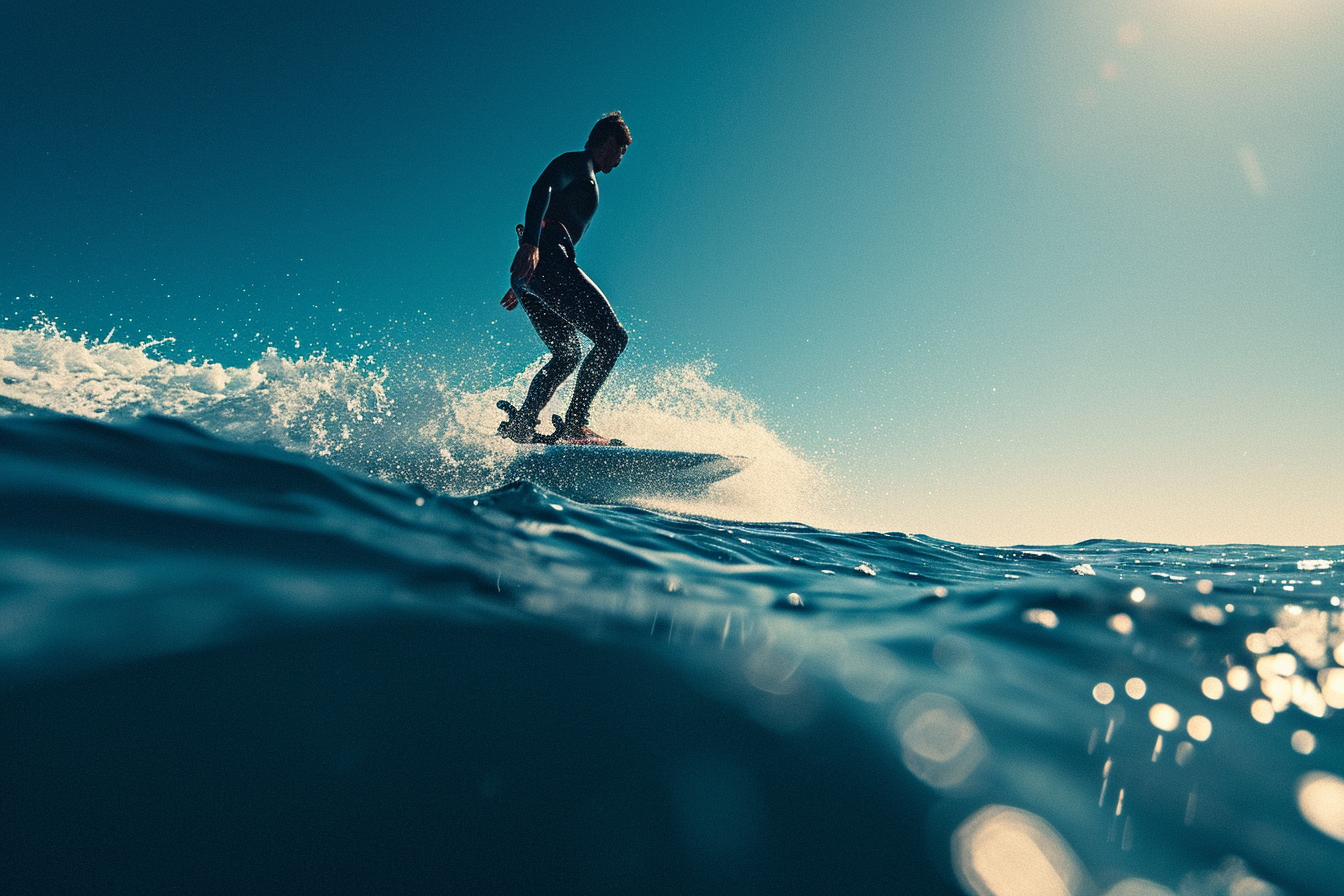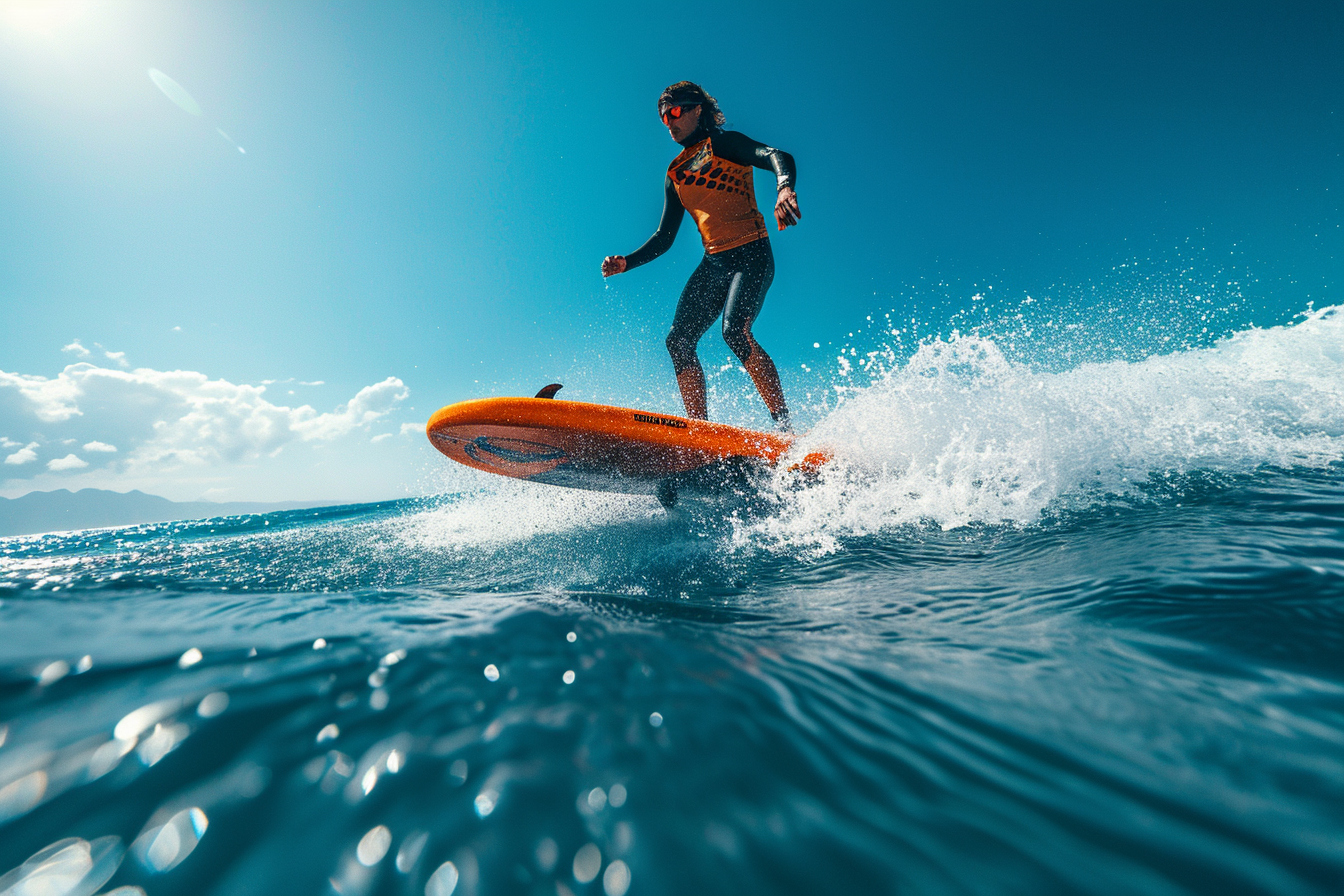
The exhilarating sport of hydrofoiling has captured the attention of water sports enthusiasts across the globe. Defined by the unique sensation of gliding above the water’s surface, hydrofoiling involves using a foil to lift a board off the water, significantly reducing drag and enabling higher speeds and smoother rides. Whether you’re interested in foil surfing, kite foiling, wake foiling, or windsurfing on a hydrofoil, the fundamentals remain the same. This introduction aims to provide a comprehensive understanding of how to get started with hydrofoiling, ensuring that novices can transition into this thrilling discipline with confidence and safety.
Understanding hydrofoils
What is a Hydrofoil?
At the heart of hydrofoiling lies the hydrofoil itself – a structure mounted under a board that extends into the water. It typically consists of a mast (the vertical part), wings (horizontal parts), and a fuselage (the body connecting them).
The Physics Behind Hydrofoiling
When a hydrofoil cuts through the water, the shape of the wings generates lift, much like an airplane’s wings in the air. This lift counteracts the weight of the rider and the board, elevating them above the surface of the water and enabling a smooth ride with minimal resistance.
Choosing your equipment
Board Selection
The choice of board is crucial for a successful hydrofoiling experience. There are different boards for each discipline, each with tailored designs and buoyancy levels. For beginners, a larger, more buoyant board is often recommended, as it offers better stability and easier take-offs.
Foil Selection
Selecting the right foil is equally important. Beginners should look for foils with larger front wings, which provide more lift at lower speeds and more stability. As you gain experience, you might opt for smaller, high-performance foils.
Safety Gear
Always prioritize safety by wearing a helmet and impact vest. In some areas, using a specific type of leash that attaches to the hydrofoil mast is also advisable to prevent the board from becoming a hazard if you fall.
Learning the fundamentals
Starting off
Practice on the Simulator
Some training facilities offer hydrofoiling simulators. Utilizing these can be an invaluable step, helping you build muscle memory for the balance and movements necessary for successful foiling.
Dry Runs
Mimic your stance and movements on land before you hit the water. Practice getting onto your board and finding your balance over the foil.
On the water
Body Positioning
Correct body positioning is indispensable. Maintain a low center of gravity by bending your knees and keeping your weight centered over the foil. Your front foot should bear the majority of your weight during the initial stages of foiling.
Getting onto the Foil
Start by riding the board on the water’s surface. Gradually shift your weight forward and apply pressure with your front foot to initiate lift-off. The key is to perform smooth and controlled movements.
Techniques for different disciplines
Each hydrofoiling discipline has its unique techniques for lift-off and riding. Let’s delve into some specifics for each.
Foil surfing
Catching Waves
Beginner foil surfers should start with small, gentle waves. Position yourself further out to sea than you would with regular surfing, giving you ample space for the larger turning radius of a foil board.
Popping Up
Quickly but smoothly transition from lying to standing on the board while keeping your center of gravity low to avoid over-foiling (rising too high on the foil).
Kite foiling
Controlled Take-off
When pull from the kite begins, ensure that you control the board’s angle with your feet to avoid breaching (when the foil comes out of the water), which often leads to crashing.
Balancing Lift with Kite Power
It’s all about finding the harmony between the lift generated by your hydrofoil and the pull from your kite. Gentle steering movements and precise kite control are the linchpins of success.
Wake foiling
Utilizing the Wake
While wake foiling, position yourself on the wake where it’s smooth but has enough energy to propel your hydrofoil. Once you’re up, you will need to find the ‘sweet spot’ to remain continually foiled.
Consistent Speed
The boat’s consistent speed is a benefit as it offers predictable conditions to practice your balance and movements without the variables of waves or wind.
Windfoil windsurfing
Wind and Body Alignment
Ensure your sail is correctly harnessed to the wind, and your body is harnessing the sail efficiently. This dynamic dictates your ability to lift and maintain height on the foil.
Sail Control
This is critically relevant in windfoil windsurfing as excessive power might cause you to foil too high, while insufficient power might result in losing lift.
Advanced techniques and tips
Carving and turning
Smooth Arcs
Turning on a hydrofoil involves leaning into smooth arcs. Practice gentle banking at first, gradually increasing your angles as your confidence builds.
Foot Pressure
Adjustments in turning are made through subtle shifts in pressure between your front and back feet. Over-steering can lead to a loss of lift or a breach.
Riding swells and pumping
Harnessing Swells
Experienced foilers can ride ocean swells, using the foil’s lift and gravity to propel themselves without the need for a wave, wake, or wind.
Pump to Generate Speed
Pumping is an advanced technique where you use an up-and-down motion to create momentum. This requires timing, leg strength, and finesse.
Maintaining your hydrofoil
Regular Inspection
Conscientiously inspect your hydrofoil equipment before and after use. Check for signs of damage or wear on all parts of the foil and board.
Cleaning and Repair
Rinse your equipment with fresh water after each session, especially if you’ve been in saltwater. Attend to any needed repairs or maintenance swiftly to prevent further damage.
Storage
Store your hydrofoil in a cool, dry place, away from direct sunlight. If possible, disassemble the foil and board to reduce stress on the connection points.
Finding the perfect conditions
Wind and Wave Forecasting
Study wind and wave forecasts to identify the best conditions for your chosen discipline. For foil surfing and kite foiling, you may prefer different wind and wave environments than you would for wake foiling or windfoil windsurfing.
Safety Considerations
Choose locations suitable for beginners and always be mindful of other water users. It is imperative to respect local regulations and guidelines to ensure the safety and enjoyment of all.

Delving into the world of hydrofoiling presents a steep learning curve but offers unparalleled rewards once mastered. Remember, the journey begins with a solid grasp of the basic principles and a commitment to safe and deliberate practice. With the right equipment, a thoughtful approach to learning, and the patience to develop your abilities over time, the world of hydrofoiling awaits with its promise of soaring above the waters with freedom and exhilaration.


